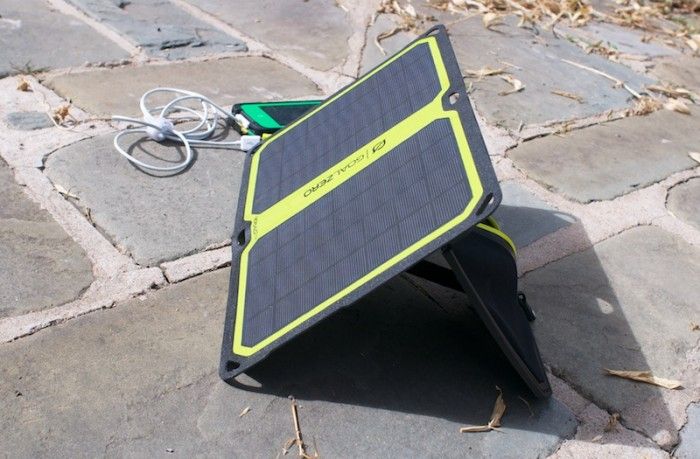
The smartphone revolution has changed the way we connect and communicate today. Sadly, ‘unplugged’ and “24/7 mobile connectivity” are still yet to co-exist in the reality of mobile users’ daily lives. Could the answer be found in solar power mobile charging that lets users recharge their smartphones on the go?
Treehugger featured the solar-powered EnerPlex Surfr series for the iPhone 4, 4S, and Samsung Galaxy SIII. The Surfr is a lightweight phone case and battery extension with an integrated flexible thin film solar panel. With the Surfr, smartphone owners can soak up precious charging minutes from the sun in case of emergency or when the phone’s battery is dead. The Surfr also acts as a device protector against accidental drops or scratches.
The EnerPlex Surfr for iPhone 4 and 4/s features a 1400 mAh internal battery augmented by a 0.36 watt solar panel integrated at the back. The iPhone Surfr weighs a total of only 72 grams and measures only 15mm thick. According to the product’s official specs page, 1 hour of solar-powered charging supplies 10 minutes of talk time. Using the Surfr provides up to 8 hours of WiFi, 27 hours of audio play, and 5 hours of mobile web surfing.
The Samsung Galaxy S III Surfr is fitted with a 2100 mAh lithium-ion battery that doubles the battery life of the unit. It weighs less than 70 grams and also measures 15mm thick. The SIII Surfr case features the same flexible thin film solar panel that provides the unit up to 360 hours of talk time, 7.5 hours of web surfing, and over 7 hours of WiFi.
EnerPlex promotes the Surfr series by challenging users to make a solar statement with their smartphones. But the idea of using solar power to recharge smartphones and mobile devices’ batteries is not a new one. Several other companies and tech startups have introduced similar products including XD Design’s Solar Window Charger, the tree-like Electree Charging Sculpture, and solar-charging phone case Snow Lizard SLXtreme Case. Some of the key qualities of truly successful solar power charging solutions for mobile phones include practicality, power, and portability. As the solar charger is likely to accompany the mobile device on the go, it also needs to be considerably durable yet lightweight to suit the users’ mobile life.
It is not only green tech startups who recognize the potential of renewable energy, in particular solar power, for mobile charging. AT&T recently launched StreetCharge, a solar-powered mobile charging pilot project together with solar tech company Goal Zero and Design firm Pensa. Streetcharge stations provide a free charge to mobile users in New York Streets. The pilot project grew out of the Superstorm Sandy crisis when the company had to supply pop-up cellular service for New York distribution centers. StreetCharge stations are powered by three 15-watt solar panels and backed up by a 168 watt-hour lithium-ion battery that can charge users’ devices in case of rainy days.
We want to be always connected but we can’t always be plugged in. While the breakneck speed of the smartphone evolution has given us high tech multi-tasking mobile devices, it has also given us a lot of reasons to use our smartphones more and more (an epitomization of Jevons Paradox). And most smartphones’ batteries cannot cope up with the demand. How we can meet the demand for longer battery life and span without generating huge carbon footprints is critical to the aspect of sustainability of the mobile technology that has become deeply integrated in our lives.




Leave a Comment